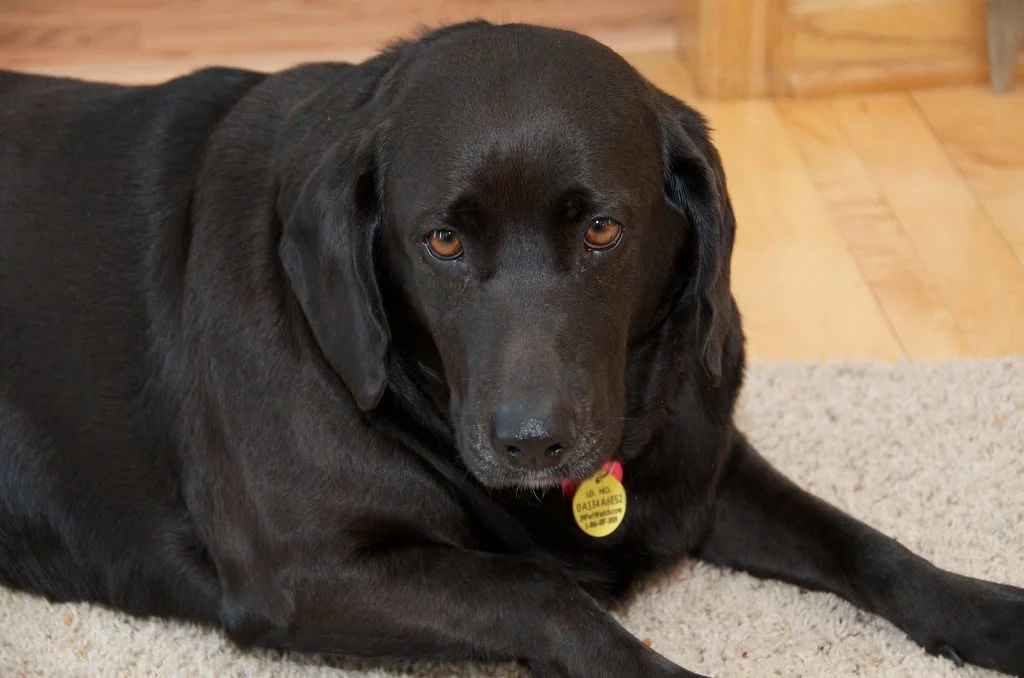Important to Know: Obesity in Dogs
In this section we give a deeper look at specific conditions to help raise awareness of what is out there, what can be done and what tests can be used to improve our pets’ health. This month it is a big issue, obesity in dogs.
Quick read - Obesity
· A very common problem that is under-recognised by owners
· It is very easy to prevent and to correct
· Obesity can lead to serious health problems if left unattended
· Behaviour problems and poor quality of life can both be linked to obesity
· Strict diets and regular exercise form the foundation of both preventing, and correcting weight issues
Obesity in Dogs
In the recent years, obesity has become a rising concerns among companion animals. Obesity, if left unattended will lead to life threatening conditions that, in an ideal world, would have been avoided. What is surprising is that many owners do not recognize obesity as being a problem with their pets and they tend to underestimate the weight of their companion animals.
Recent studies have shown that over 20% of the puppies are overweight by the time they reach 6 months of age. This is an alarming number, and all of this can be avoided by following some simple feeding guidelines.
What is it:
Obesity is an abnormal accumulation of body fat, usually 20% or more over an individual's ideal body weight. Obesity is associated with increased risk of illness, disability, and death.
In older animals, obesity can lead to numerous health problems. Those problems include arthritis, hypertension, diabetes and significantly, obesity will lower the lifespan of any pet.
What conditions are associated with Obesity?
The most common medical problem associated with obesity is osteoarthritis (OA) (read our previous blog on OA here). Excess weight, through the increased pressure exerted at the level of the joints, predisposes overweight patients to osteoarthritis. OA, a degenerative disease of the articular cartilage, is very painful. This pain limits normal movements of the affected joints, changes our pet’s gait and results in muscle atrophy. All of this interferes with the usual daily activities and can further exacerbate the obesity.
Young animals grow rapidly, especially puppies of large breeds that have periods of explosive growth. Excess weight during this period of bone skeletal formation can contribute to the appearance of serious orthopaedic conditions such as hip dysplasia or elbow dysplasia.
In addition to the systemic and locomotor disorders listed, obesity can also involve behavioural deviations, the animals becoming sedentary, sad, always begging for food. Some individuals even refuse to play or interact with their peers, and sometimes they become defensive in relation to them due to physical limitations, because of joint pain and decreased exercise capacity. This will significantly reduce the quality of life of our pets.
Conditions Influenced by Obesity
· Osteoarthritis
· Diabetes
· High Blood Pressure
· Locomotor Disorders
· Breathing Disorders
· Skin Disorders
· Behaviour Changes
How is it diagnosed:
When it comes to diagnosing obesity, the most preferred method is the visual inspection of the dog or cat. If the body shape does not look properly, then the answer is obvious.
The Body Condition Score or BCS system has been used for years to classify pets according to their body shape. The scales range from 1 - 5 or from 1 - 9 depending on the system used, 4 or 5 are the ideal range for both dogs and cats. Any deviation from that would be considered either underweight or overweight.
How is Obesity treated?
The best way to treat obesity is to prevent it in the first place. If you have a young dog, being careful on what you feed, restricting treats and measuring carefully how much food they are fed. It is easy for owners to sometimes slip extra food in a dog’s diet, either due to negligence or from kindness. In most cases, if a dog is not overfed and if treats are not given in an excessive amount, the weight will be within the ideal limits.
What can I do if my pet is already overweight?
Our nurses have a very clear process to help pets lose weight. The steps are summarised. In many instances help is needed to calculate what is needed to be fed so contact us for our Weight Clinics if you would like extra support.
Step 1: First step is to know exactly what you are feeding your pet. In many cases we don’t know exactly how many calories we are feeding our dogs. A “scoop” for a large dog may be too little, whilst for a small dog it may be way too much!
Step 2: Identify what ideal weight your pet should be
Step 3: Calculate how much your pet should be eating for their IDEAL weight.
Step 4: Work our an appropriate rate of weightloss and feed accordingly
In addition to reducing calorie intake, regular exercise is also very important. Established walking routines and other types of physical exercise can help your dog stay in shape.
Conclusion
Obesity is a common problem in the veterinary world, a problem that can be prevented with the right understanding. Having a proper dietary plan and a regular exercise schedule can lead to a healthy lifestyle for your pet and will lower the risk of certain health problems to appear.


